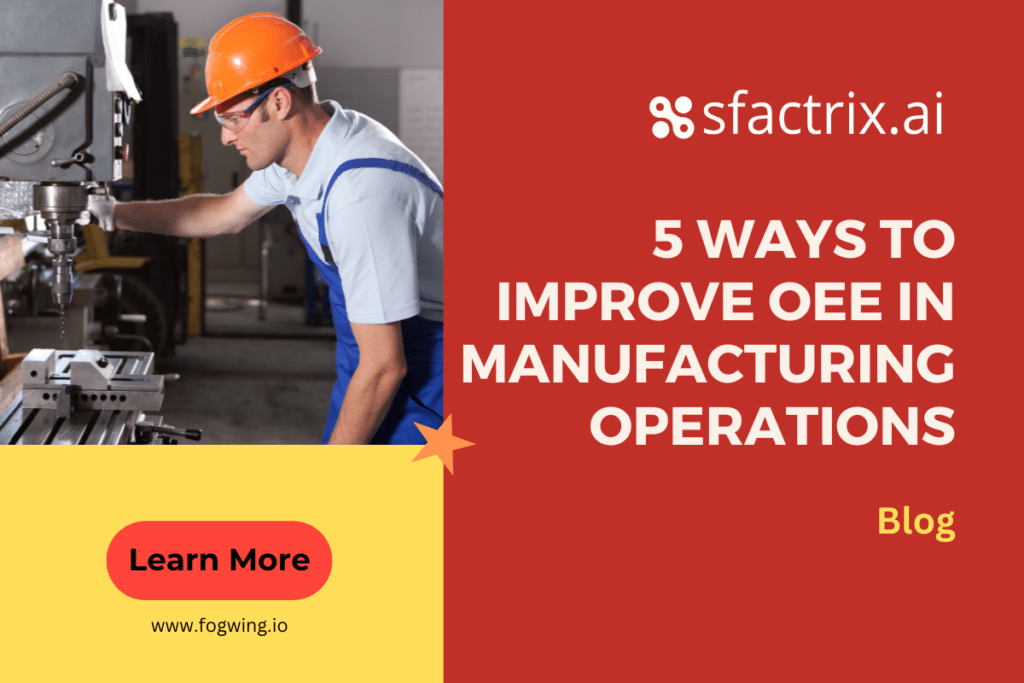
Today’s manufacturing industry is in for a global competition with increasing brands, choices, quality, efficiency and so on. At the wake of such rising competition, it is important to sustain exclusivity coupled with advanced Overall Equipment Effectiveness standards for measuring manufacturing productivity and drive apt business decisions that impact business and production optimization in the long run. As an outcome, it is crucial to keep a keen watch on the emerging methods that facilitate optimization of Overall Equipment Effectiveness (OEE) within the manufacturing accounting regime. Let’s begin to explore OEE and what solution to a solution refers to in this content herewith.
What is OEE?
OEE is an abbreviation of Overall Equipment Effectiveness. It is the most validated standard for measuring manufacturing productivity. Truly productive measuring time is identified with OEE application in the manufacturing sector across production centres. If the OEE score is a 100%, it reflects the manufacturing of good parts (parts that do not require rework) at a quick pace with no stop time that indicates optimization of productivity. OEE begins with Planned Production Time (PPT); total time that an equipment is expected to produce.
Further exploring OEE, it is a combination of:
✓ Availability (A)
✓ Performance (P)
✓ Quality (Q)
OEE = A + P + Q
Availability refers to no stop time while Performance refers to quick production time and Quality refers to good parts alone in the field of manufacturing production.
Availability = Run time / Planned production time
Performance = Ideal cycle time x Total count / run time
Quality = Good count / Total count
The calculation of the same requires consideration of various components regarding production. In order to get an accurate OEE all calculation of different components must be accurate in order to receive exact OEE in the manufacturing production cycle of a firm.
Therefore, how you achieve the exact numerical count for further computation is the concerning matter for all firms especially large-scale ones. Manual production count is close to an impossible task with increasing production levels to match the escalating market demand. An alternative is a necessity in the current scenario!
The problem with computing OEE score:
The major problem that manufacturing industries face with calculating OEE is the enormous difficulty with data collection, especially that of real-time. Real-time data is a key factor toward calculating run time, planned production, scheduled production, cycles and so on. As a result, apart from trivial mistakes of inclusion and exclusion while measuring parameters for computing the OEE score, data collection remains a huge problem as manual work cannot suffice for the spontaneous and accurate collection of real-time data in large amounts. To add on, lack of digital management further problematises OEE calculation and manufacturing production maintenance.
The solution:
As is the vastness of the production cycle and trivial measures (run time, cycle time, total count, availability, performance, quality and so on) to be accounted for estimating efficiency within the manufacturing industry, manual counting or system application records of production and equipment effectiveness is no facile task, it can easily go faulty. Therefore, a befitting alternative is mandatory. To our fortunate advantage such operations can be carried on smoothly with latest and effective technology. Like many of its use cases, technology has eased and improved functioning efficiency within a spectrum of industries. The most efficient of its kind that is strong-arming technology to witness a new phase in Industrial revolution is the Internet of Things (IoT). When applied to industries with specific enterprise goals, it takes the name IIoT / Industrial Internet of Things with profound features.
What is IoT?
It is featured as a concept of connecting various devices to the internet and among other connected devices. IoT is nothing but an ecosystem of connected physical devices/things that are made accessible through internet. IoT is a network of connected things/devices/objects which have an IP address that deployed sensors collect real-time data from and using streaming analytics transfer it to a cloud and further classify to construct readable data that is made available for customers.
Fogwing IIoT Platform:
Fogwing IIoT platform is powered by Factana, the cognitive IoT company. Fogwing is an advanced engineered product created to serve the purpose of its customers, particularly the manufacturing field. Fogwing works on principles of AI and automation. It is an exemplary combination of hardware, network communication, infrastructure, data processing and intelligence for a holistic experience of IIoT technology. With its unique command features it even triggers action to be performed by a device. Fogwing IoT technology facilitates manufacturing firm managers to accurately measure working condition of an equipment by capturing real-time data and making it accessible at any point in time. It also helps to automate maintenance processes within the vicinity of a production unit and thereby assures a healthy and effective production cycle.
How can Fogwing help with OEE?
As OEE is a relevant scale to measure and estimate the production level (equipment efficiency), loss accounting, investment optimization, product quality and so on within the scope of manufacturing industries, getting data at real time is crucial and central to further computing. Unfortunately, acquiring real-time data has always been the biggest hurdle among manufacturing units for its expansive nature of production. Another major issue lies with lack of digital management within manufacturing units to record production efficiency, performance, quality and processes. Manufacturers needs to adopt digital manufacturing approach. Thankfully, Fogwing eradicates both drawbacks within the manufacturing units of a firm across divisions.
IR sensors, Gyroscope sensors, motion detection sensors are deployed upon all manufacturing equipment within the manufacturing vicinity. These sensors are crafted to capture data at real time and spontaneously send it to a cloud through wireless network communications. In the Fogwing cloud infrastructure, all data will be analyzed by our advanced data processing engine to validate the data integrity and accuracy. Operators / managers may set a threshold against these data sets to trigger automated alert for prevention of damage, recording of production count and operational efficiency and so on in manufacturing units. The customer can also access this data through Fogwing Web application dashboard. In case the threshold limits of equipment efficiencies are being reached or has exactly reached, Fogwing will send signals to the microcontroller to trigger a set action that will be registered and accounted on Fogwing for further verification. This way when calculating OEE score of a manufacturing firm, trivial data regarding, planned stops, unplanned stops, run time, good count, total count and so on are available in accurate numbers. These accurate numbers facilitate quick and authentic computing of overall Availability, Performance and Quality of equipment used in manufacturing production and when summed up (A + P + Q) provides = OEE (Overall Equipment Effectiveness) score.
Customers are now empowered to achieve accuracy in their manufacturing efficiency that influences decision taking that in turn reflects on annual turnovers, profits and growth rates. Fogwing enables you to remain distinguished and unique through the serves it provides. Get yourself to learn more by visiting : https://www.fogwing.io/iot-solutions/digital-manufacturing/




